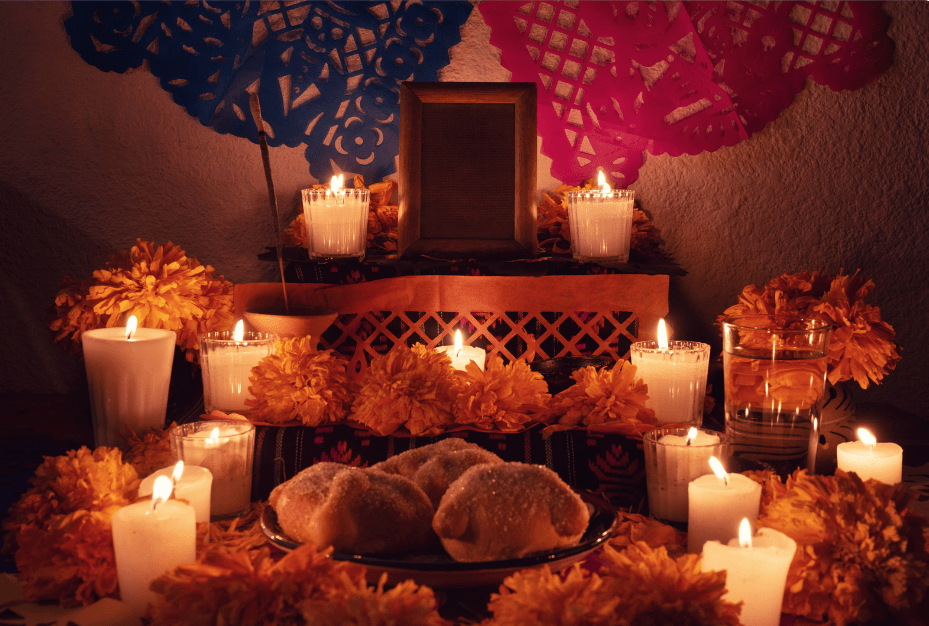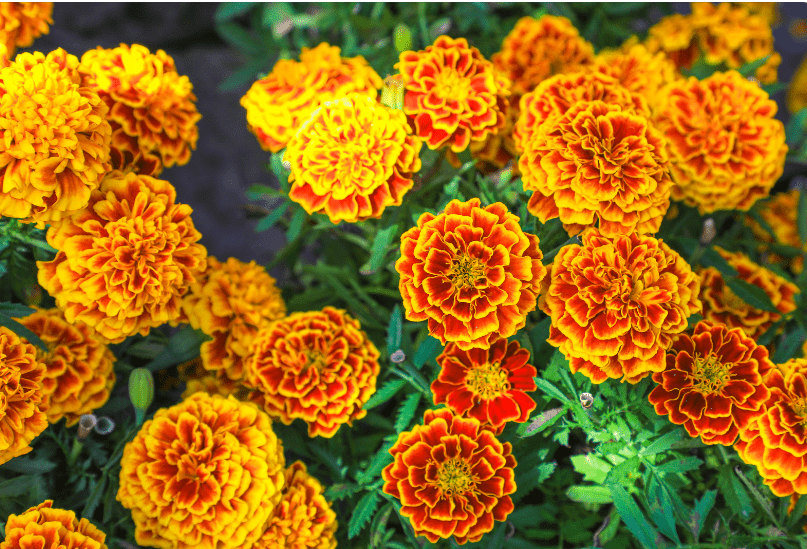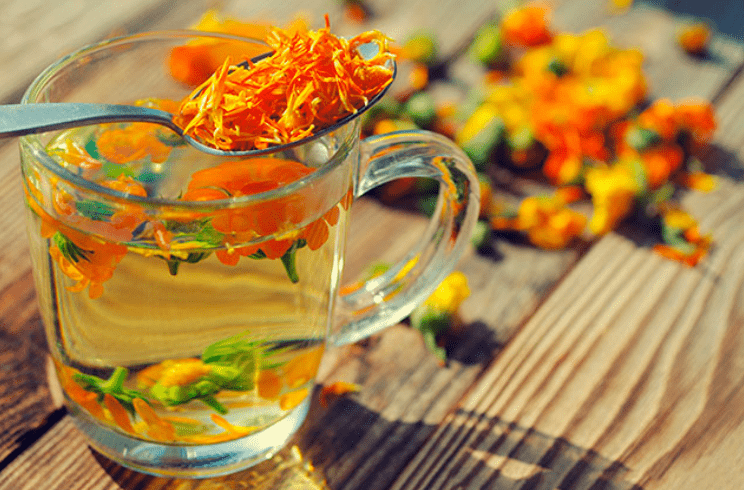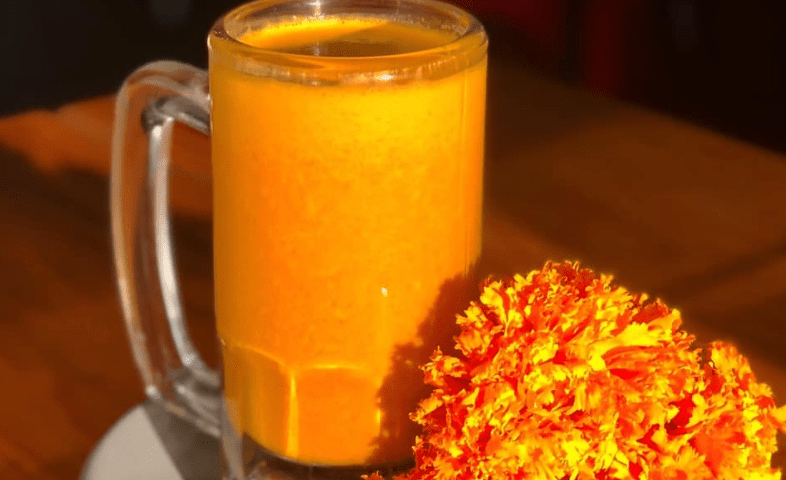Around this time of year throughout central and southern Mexico, waves of yellow, orange, and red blossoms of the flowering genus Tagetes, better known as “Cempasúchil” in Mexico or the “Aztec Marigold” in English-speaking countries, are harvested to celebrate one of Mexico’s most iconic festivities; Dia de los Muertos, or Day of the Dead. Dia de los Muertos celebrates ancestors and deceased loved ones who are remembered through food, beverage, song, and the building of intricate and ornate altars using these flowers.
Cempasuchil has a long history in Mexican culture. It was first used by the Aztecs, who believed that the flower was sacred to the goddess Mictecacihuatl, the queen of the underworld. The Aztecs would often offer cempasúchil flowers to Mictecacihuatl in order to appease her and ensure a safe journey for their loved ones to the underworld.

In another legend, the story of Xochitl and Huitzilin, Xochitl and Huitzilin are childhood friends who eventually fall in love with one another. Together they paid tribute to the Sun deity Tonatiuh, often affiliated with the marigold due to its vibrant color, by offering these flowers to honor the love between them. But in an unfortunate incident, Huizitlin was called into war and never returned. Torn by the heartache of her lost love, Xochitl (Nahuatl for “flower”) begged Tonatiuh to allow her to be with Huiztlin for eternity, so Tonatiuh converted Xochitl into a flower, a cempasúchil, and when it was time to blossom, Xochitl opened her petals to be kissed by a hummingbird which turned to be a reincarnated version of Huitztlin.
The legend goes that while both the cempasúchil and the hummingbird coexist, it will remain as a testament of the love between Xochitl and Huitzilin.
Today, cempasúchil is still used in Mexican culture to honor the dead. But aside from its ceremonial usage, the cempasúchil has also been used in both ancestral and natural remedies to such ailments as stomach issues, nausea, and indigestion.
Breaking down the cempasúchil, its petals are used for these ailments, where they can be made into teas or tinctures. Though Mexico has approximately 35 different kinds of cempasúchil, all of these flowers derive their color from the carotenoids found in their petals, the natural pigment that gives the cempasúchil its bright yellow, orange, and red hues.

The petals themselves are rich in an oil that is rich in monoterpenes, which according to a paper put out by the Department of Physiology in the Federal University of Sergipe, Brazil, has “pharmacological properties including antifungal, antibacterial, antioxidant, anticancer, anti-spasmodic, hypotensive, and vasorelaxant.”
But pharmacological properties aside, the cempasúchil also holds a rich position in Mexican gastronomy. Curados de Cempasuchil, pulque flavored with cempasúchil found this time of year range from bright yellow to a beautiful caramelized orange color with floral flavors and flavors reminiscent of butterscotch and toasted marshmallows, but all in all, the cempasúchil is just its own unmatched and distinct and cultural flavor.
Ice cream is also flavored with cempasúchil petals with similar flavors to the curados de cempasúchil. But ice cream is one of many food items that are flavored with cempasúchil. Bread, tamales, masa, tea, soft drinks, cocktails, salads, cookies…the list of food that contains cempasúchil goes on like the waves of cempasúchil in the fields of Mexico.
The following are very simple recipes that you can make at home with cempasúchil. Just a word of advice, try to look for organic cempasúchil or organic cempasúchil petals for your recipes and if possible, attempt to source your cempasúchil from Mexican producers or local producers that live off the sales of their cempasúchil at this time of year.
The first recipe is a very basic recipe and a great one to acquaint one with the flavor and usage of cempasúchil:
Cempasúchil Tea

Instructions: Bring about one cup and a half of water to a boil and take off the heat. Allow to cool for about 10 minutes. While hot, take a pinch of your cempasúchil petals and place them into your tea strainer or directly into your mug (you can stain them out later). Allow to steep for 3 to 5 minutes depending on the concentration and potency of flavor you prefer in your tea. Your tea should be a beautiful golden color if using orange or yellow cempasúchil.
Note: over-steeping of the petals may cause a bitter tea BUT act as a better remedy for stomach issues. If purchasing the entire flower, make sure to remove all petals from the bulb. The bulb itself will cause the tea to become extremely bitter and unpleasant.
Cempasúchil Syrup
Using the same exact recipe as the cempasúchil tea, have your final product (still hot and completely strained of petals) and weigh out your hot cempasúchil tea on a scale. Using the mass of the tea, take the same amount of mass in white granulated sugar or agave syrup and mix it into the hot mix. The final result will be a cempasúchil syrup that works wonderfully in lieu of regular simple syrup in cocktails or in your morning tea or coffee.
Personally, I love a cup of chamomile tea with marigold syrup or a whiskey sour subbing the simple syrup with marigold syrup.
Atole de Cempasuchil

The following recipe was a recipe found and translated from kiwilimon.com. It is perfect for the cool weather season!
1.5 cups of Cempasuchil
2 cups Water
8 Cups of Milk/Milk Alternative
150 grams of corn masa
1 piloncillo cone
1 cinnamon stick
1 peel of an entire orange without the pitch
Loose cempasúchil and grated cinnamon for garnish
-blend the cempasúchil petals in water until made into a paste. Separate and store.
-blend the milk and masa together and separate well.
-boil the masa milk blend on low heat until it begins to lightly bubble. Once it begins to bubble add the piloncillo, cinnamon, and orange peel into the mix and cook for another 10 minutes. Add some of the remaining petals (save some for garnish) into the mix and allow to rest for 5 minutes before serving.
-pour into mugs, preferably clay mugs for authenticity and aroma, and sprinkle with a light dusting of cinnamon and cempasúchil petals.



